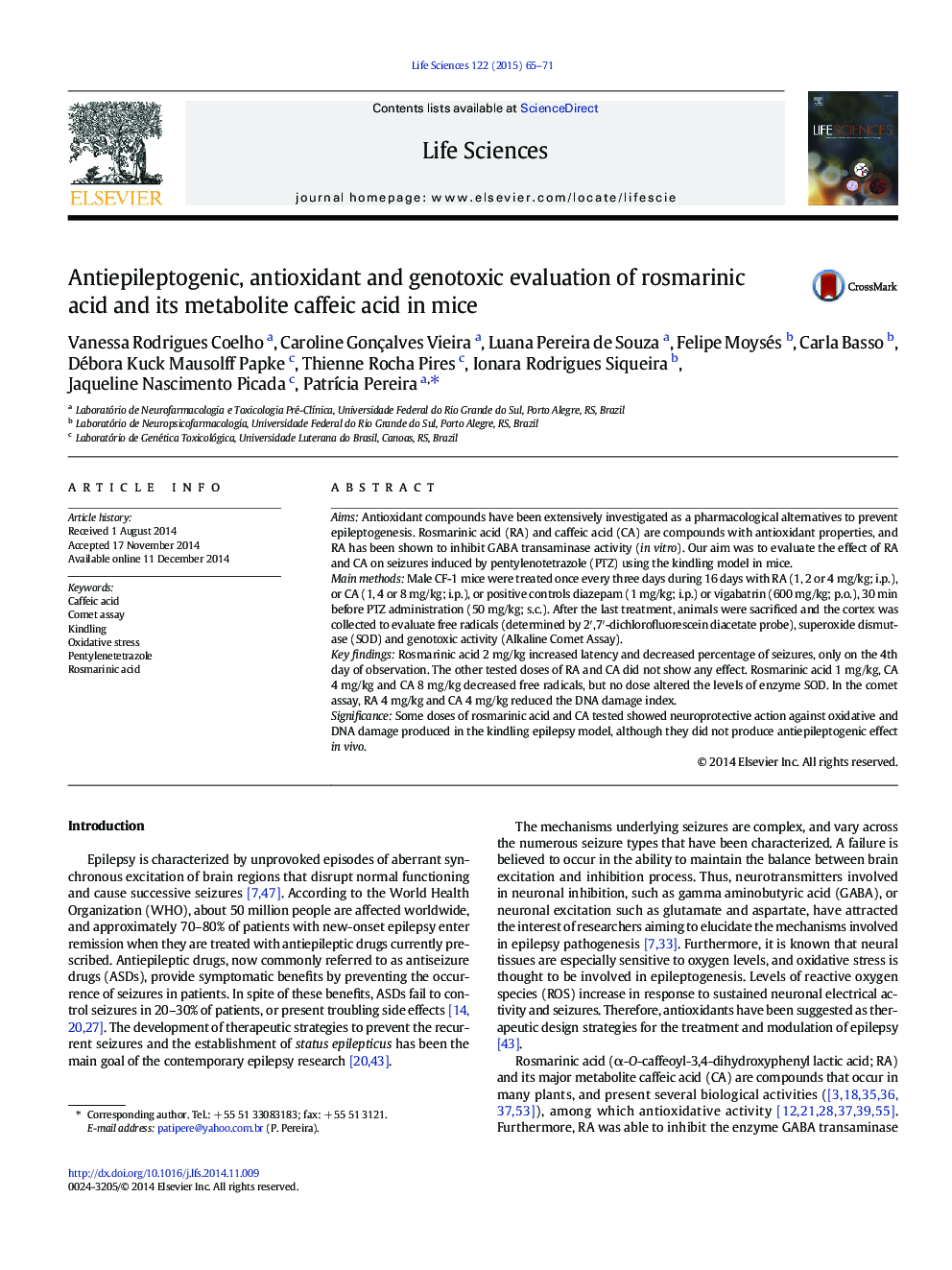| Article ID | Journal | Published Year | Pages | File Type |
|---|---|---|---|---|
| 2550978 | Life Sciences | 2015 | 7 Pages |
AimsAntioxidant compounds have been extensively investigated as a pharmacological alternatives to prevent epileptogenesis. Rosmarinic acid (RA) and caffeic acid (CA) are compounds with antioxidant properties, and RA has been shown to inhibit GABA transaminase activity (in vitro). Our aim was to evaluate the effect of RA and CA on seizures induced by pentylenotetrazole (PTZ) using the kindling model in mice.Main methodsMale CF-1 mice were treated once every three days during 16 days with RA (1, 2 or 4 mg/kg; i.p.), or CA (1, 4 or 8 mg/kg; i.p.), or positive controls diazepam (1 mg/kg; i.p.) or vigabatrin (600 mg/kg; p.o.), 30 min before PTZ administration (50 mg/kg; s.c.). After the last treatment, animals were sacrificed and the cortex was collected to evaluate free radicals (determined by 2′,7′-dichlorofluorescein diacetate probe), superoxide dismutase (SOD) and genotoxic activity (Alkaline Comet Assay).Key findingsRosmarinic acid 2 mg/kg increased latency and decreased percentage of seizures, only on the 4th day of observation. The other tested doses of RA and CA did not show any effect. Rosmarinic acid 1 mg/kg, CA 4 mg/kg and CA 8 mg/kg decreased free radicals, but no dose altered the levels of enzyme SOD. In the comet assay, RA 4 mg/kg and CA 4 mg/kg reduced the DNA damage index.SignificanceSome doses of rosmarinic acid and CA tested showed neuroprotective action against oxidative and DNA damage produced in the kindling epilepsy model, although they did not produce antiepileptogenic effect in vivo.
